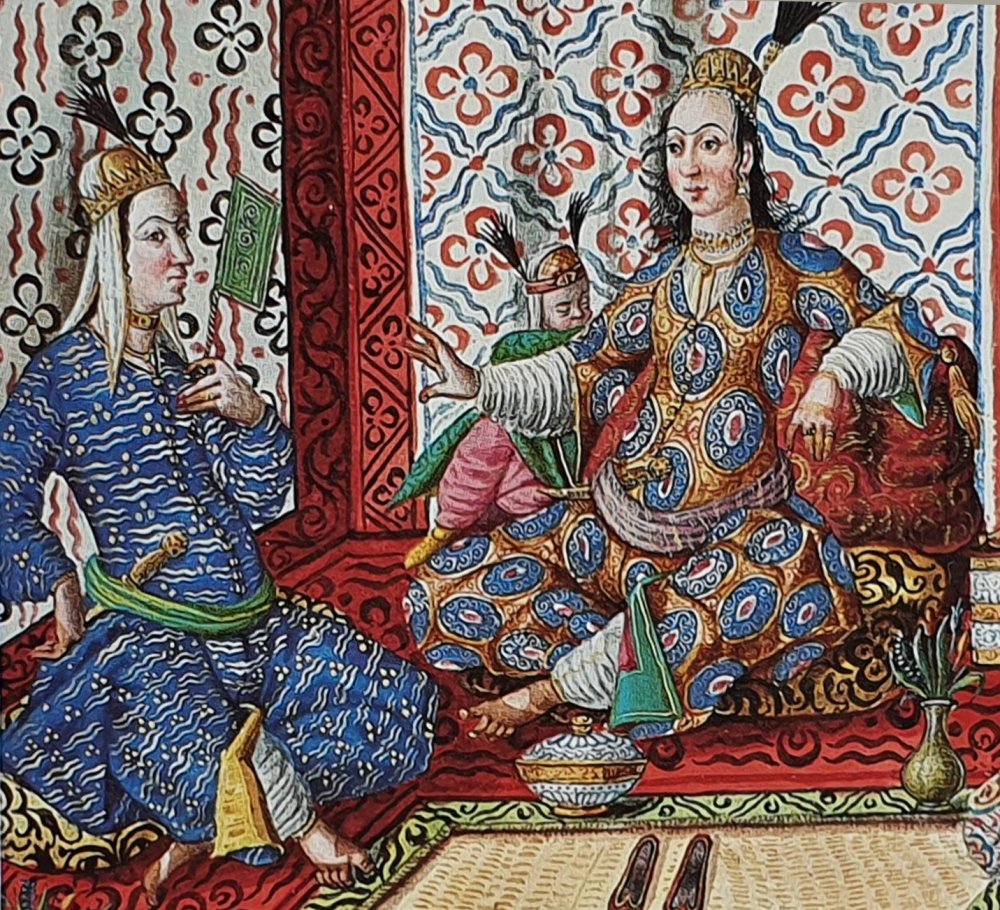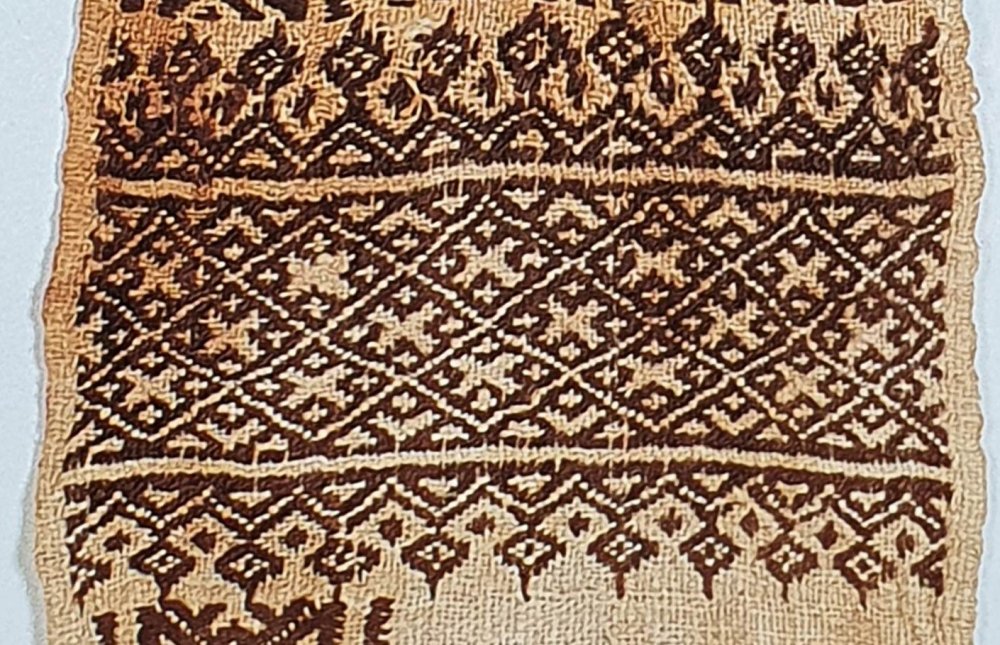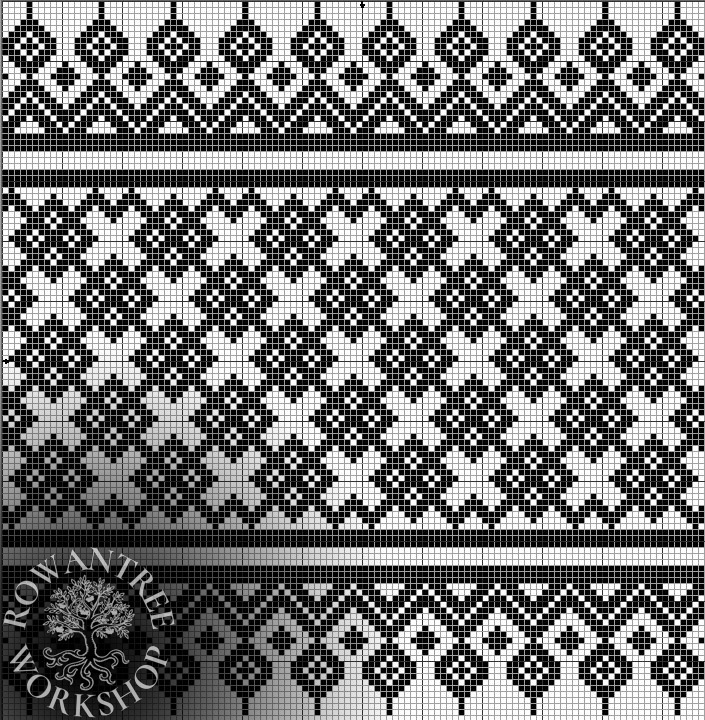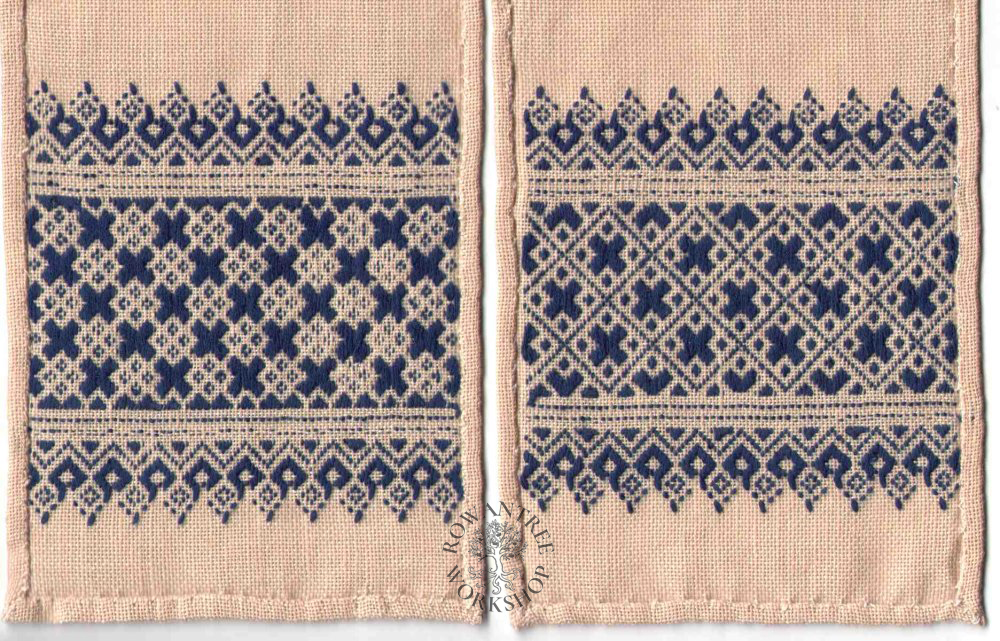This sash or girdle is based on a number of extant examples from the Mamlûk period in Egypt (1250-1517).
These sashes were worn by both men and women, wrapped around the waist over the coat. I made this one as a present for my friend Huraiwa, to go with her Mamlûk attire.

Research and Design
The girdle or sash was a part of the standard clothing for both men and women across much of the Middle East, from the middle ages to the 19th century (Krody 2000), and can be found in contemporary images as well as extant examples.

Source: Bibliothèque nationale de France

Source: Krody (2000)
Several extant examples have been found in Egypt and now part of the Newberry collection, held in the Ashmolean Museum at Oxford University. The Ashmolean publication Embroideries and Samplers from Islamic Egypt (Ellis, 2001) notes that contemporary girdles are made of tabby woven linen or cotton, with thread counts varying from 11-28/cm.
The majority of examples in the collection are evenweave, but others have up to 25% difference between warp and weft thread counts. The width of the girdles varies from 6 to 15 cm. Most examples are only found as fragments, so lengths cannot always be determined. The only full length example was 162 cm long.
The narrow hems are sewn with a running stitch or overcast in coarse linen thread and may be embellished with simple embroidery.
The girdles are decorated with silk embroidery, in a variety of styles including counted and free styles. Dark blue and red are common colours, especially for geometric work. This piece is based on two related patterns on a single piece (possibly a sash sampler) held in the Newberry collection (Accession EA1984.489), dated to the 14th century.

Source: Ashmolean Museum

Source: Ashmolean Museum
Construction
I had some trouble charting the design until I realised that the basic stitch covered three threads, rather than the two I had originally supposed. Western Europe pattern darning is usually executed by adding an extra weft, but these Mamlûk examples are worked vertically – an extra warp.


The ground fabric is a piece of tabby woven cotton/linen mix (12/12 threads per cm) in a dull pink, similar to several extant items. I worked the embroidery in 3 threads of blue Madeira silk, to provide sufficient coverage over the ground fabric. The piece was worked in the hand, not a frame.
The patterns are not reversible – the majority of the thread lies on the front of the piece. All the designs minimise the length of floating threads on the back of the design, although this varies with the pattern. The ends are hidden in the embroidery.
I found it easier to work the border strip and main designs separately – and then found that this produced the same sawtooth effect on the back, as can be seen in the originals.

Once the embroidery was complete, I sewed the hems with a medium weight linen thread – coarser than I would normally choose for hemming, but in line with the extant examples.
Afterword
I enjoyed the mental and technical challenge this piece presented! I was pleased when it won the WCoB competition for Islamic Embroidery that year.

